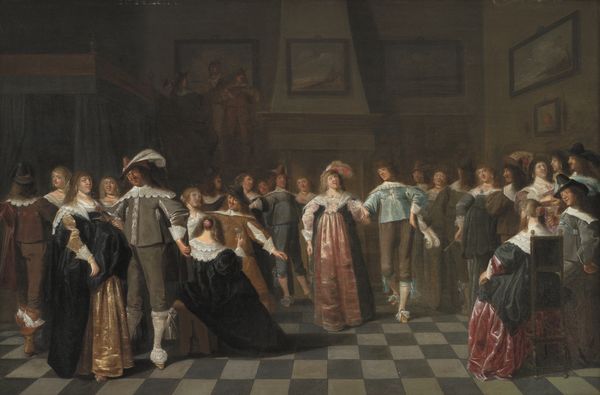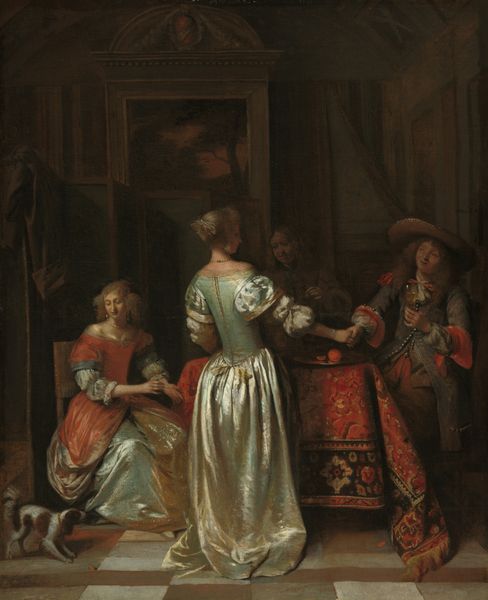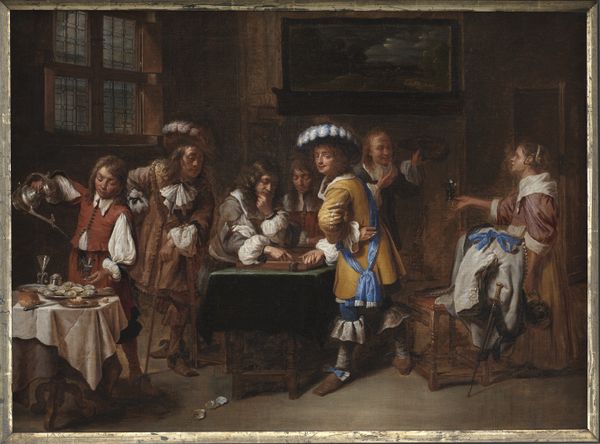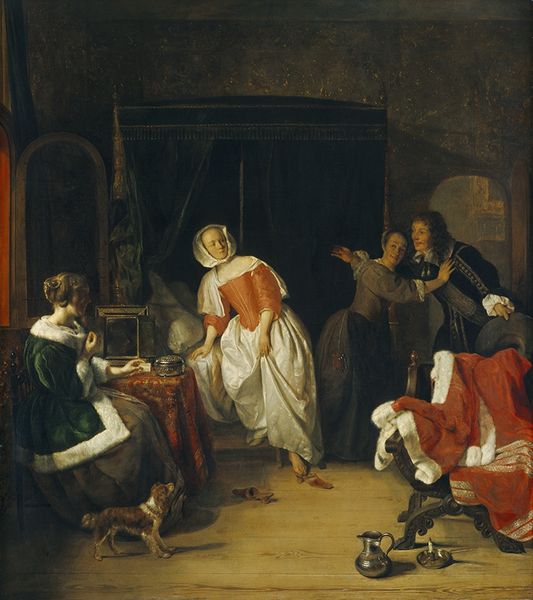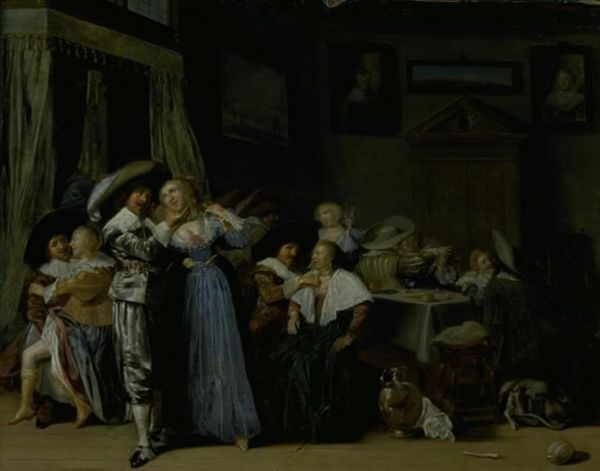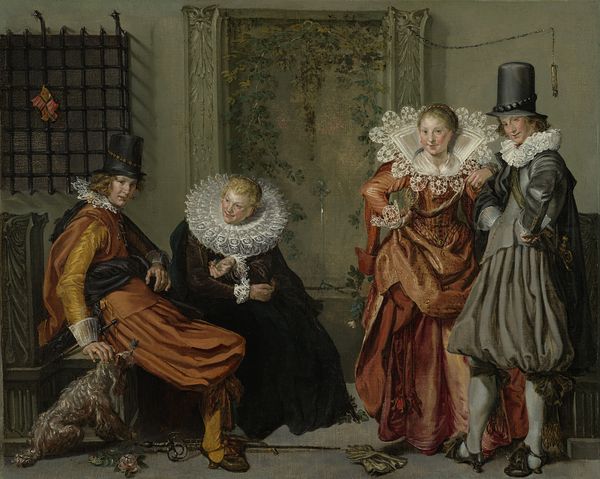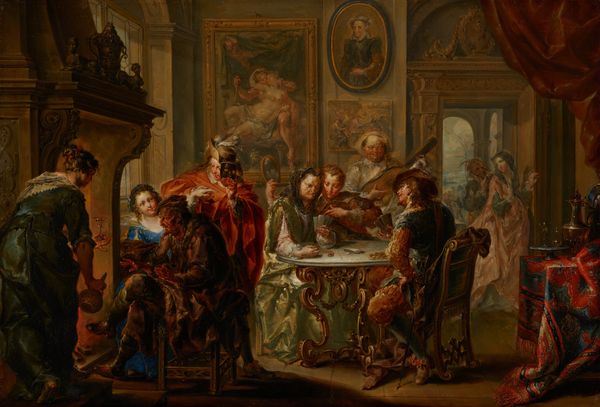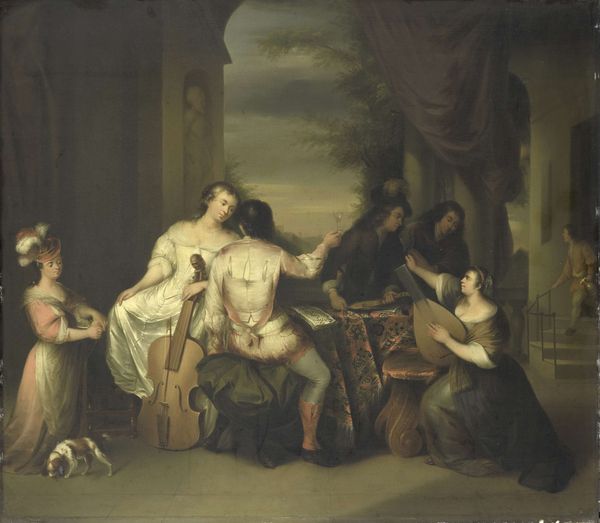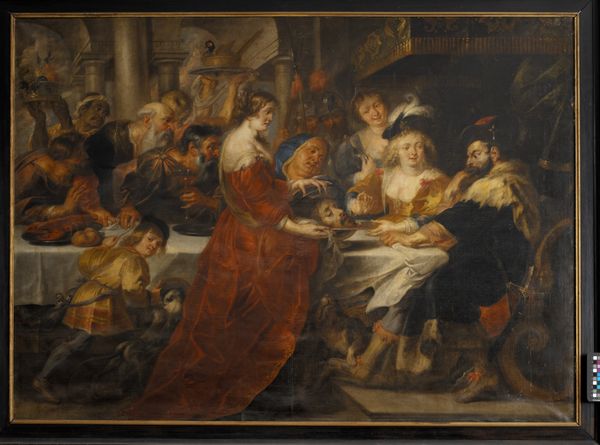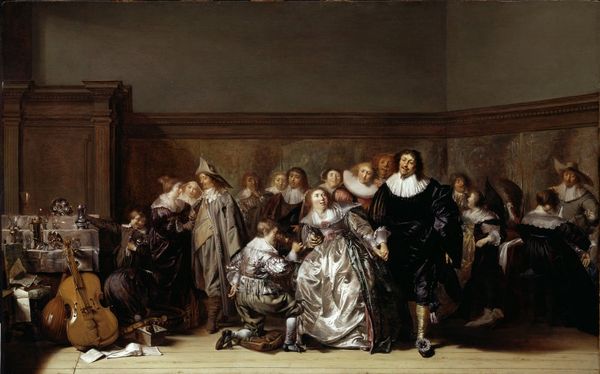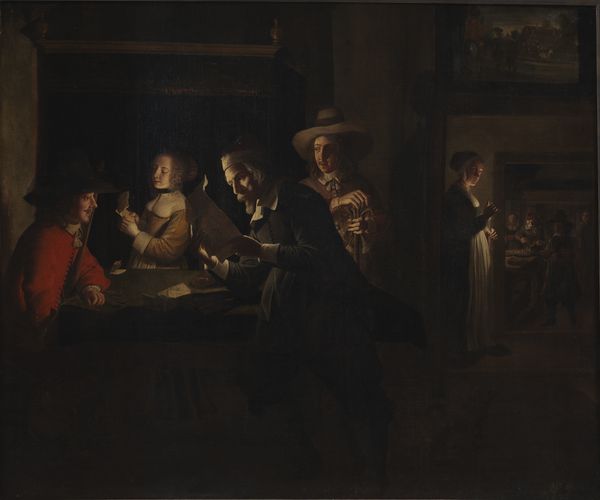
painting, oil-paint
#
portrait
#
dutch-golden-age
#
painting
#
oil-paint
#
figuration
#
oil painting
#
group-portraits
#
genre-painting
Dimensions: support height 54.5 cm, support width 88.5 cm, outer size depth 9 cm
Copyright: Rijks Museum: Open Domain
Curator: This is "Merry Company in a Room" painted in 1633 by Anthonie Palamedesz. It’s an oil on canvas, showcasing a lively gathering of figures indoors. Editor: It strikes me as…carefully arranged. Everyone is so deliberately placed; the light is bright, and the figures, though in revelry, seem quite posed. What’s your take? Curator: Well, it’s a classic example of a "geselschap" or "merry company" scene popular in the Dutch Golden Age. These paintings reflected the values and social behaviors of the rising merchant class. A display of prosperity. Editor: Ah, prosperity manifested! I notice the way the light glints off the glassware and the elaborate textiles. The crafting of the image emphasizes luxury. Even the dog looks well-fed. Did the painter focus specifically on interior scenes like this? Curator: Yes, Palamedesz. specialized in these genre scenes and group portraits. He captured the nuances of social life, reflecting on the performative aspect of class. Note also the paintings on the back wall, these interiors existed as a space for consuming more artwork! Editor: Interesting. The detail put into the rendering of their clothing points to an obsession with materials, fabrics and adornment, perhaps exceeding the characterization of individual people. Look at the gentleman slumped in his chair. I wonder if this work speaks more to a broader trend in art than to a study of an isolated population sample. Curator: That’s insightful. He and others contributed to establishing codes and visual tropes through such popular works. What is depicted reflects both ideals and a self-awareness within this societal echelon. Editor: The artifice feels like the point. Everything on display for a specific purpose. And if art serves the wealthy class of people, is there something lost in its messaging to other classes? I’m just left with a curious aftertaste… a certain calculated frivolity? Curator: These glimpses into history definitely offer food for thought. Seeing the choices, commissions, and artistic interpretations is always enlightening in understanding a culture’s values. Editor: Indeed. It pushes us to think more critically about the interplay between craftsmanship, consumption, and the shaping of history, whether painted or woven.
Comments
No comments
Be the first to comment and join the conversation on the ultimate creative platform.
